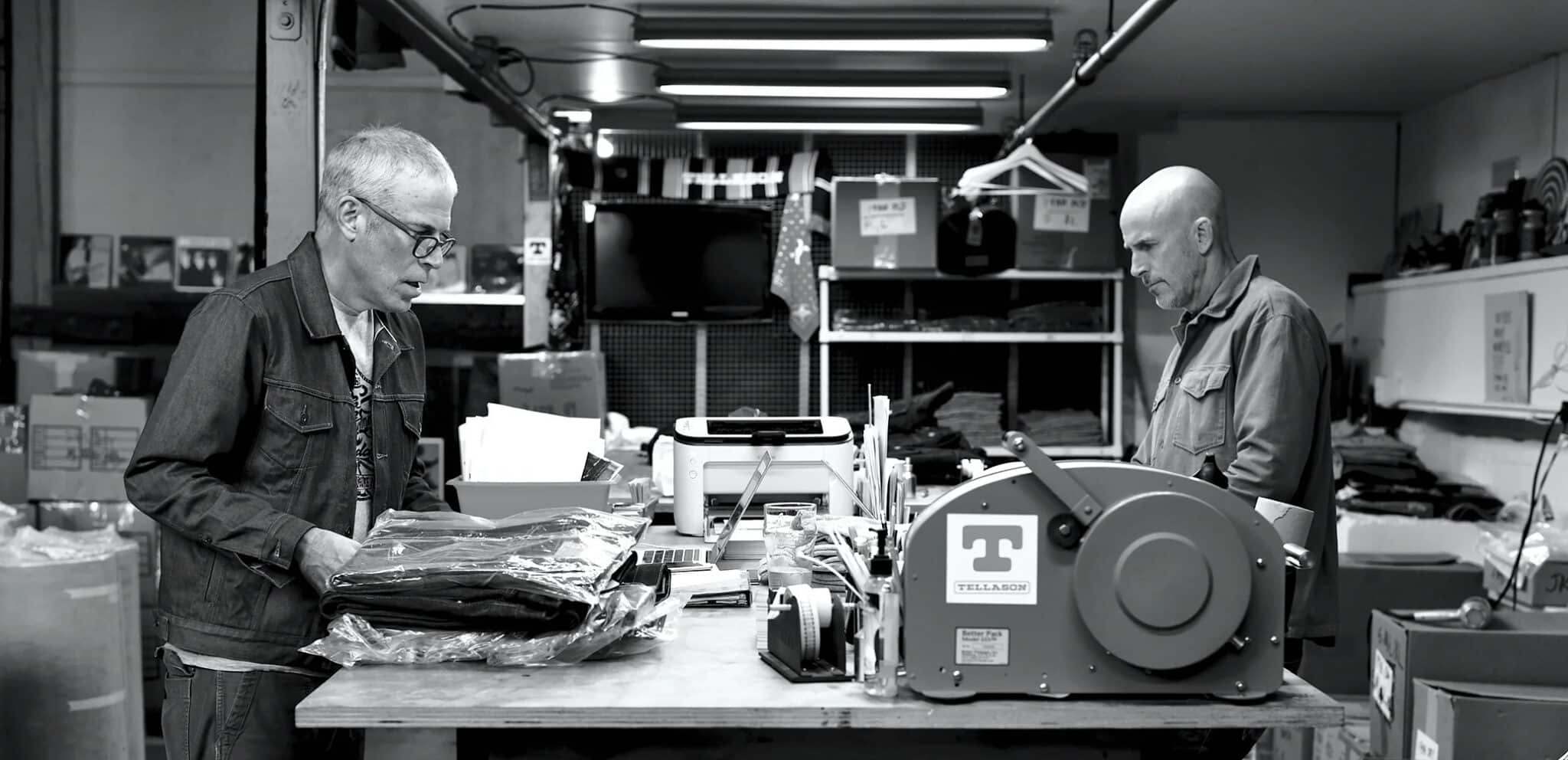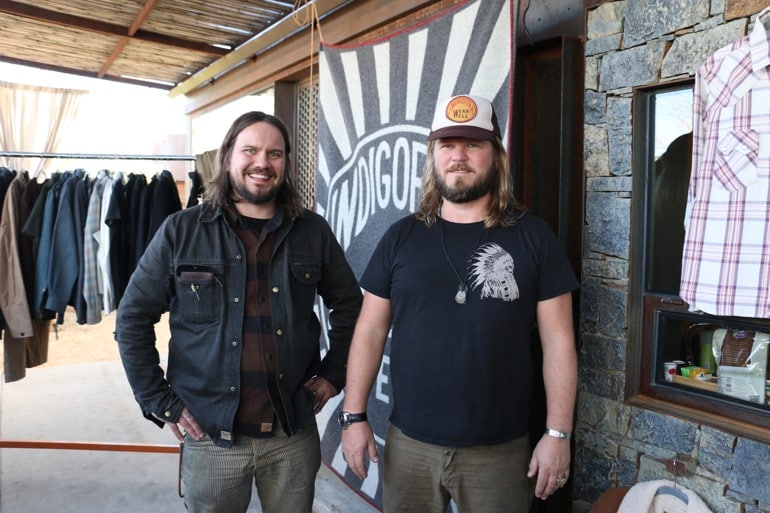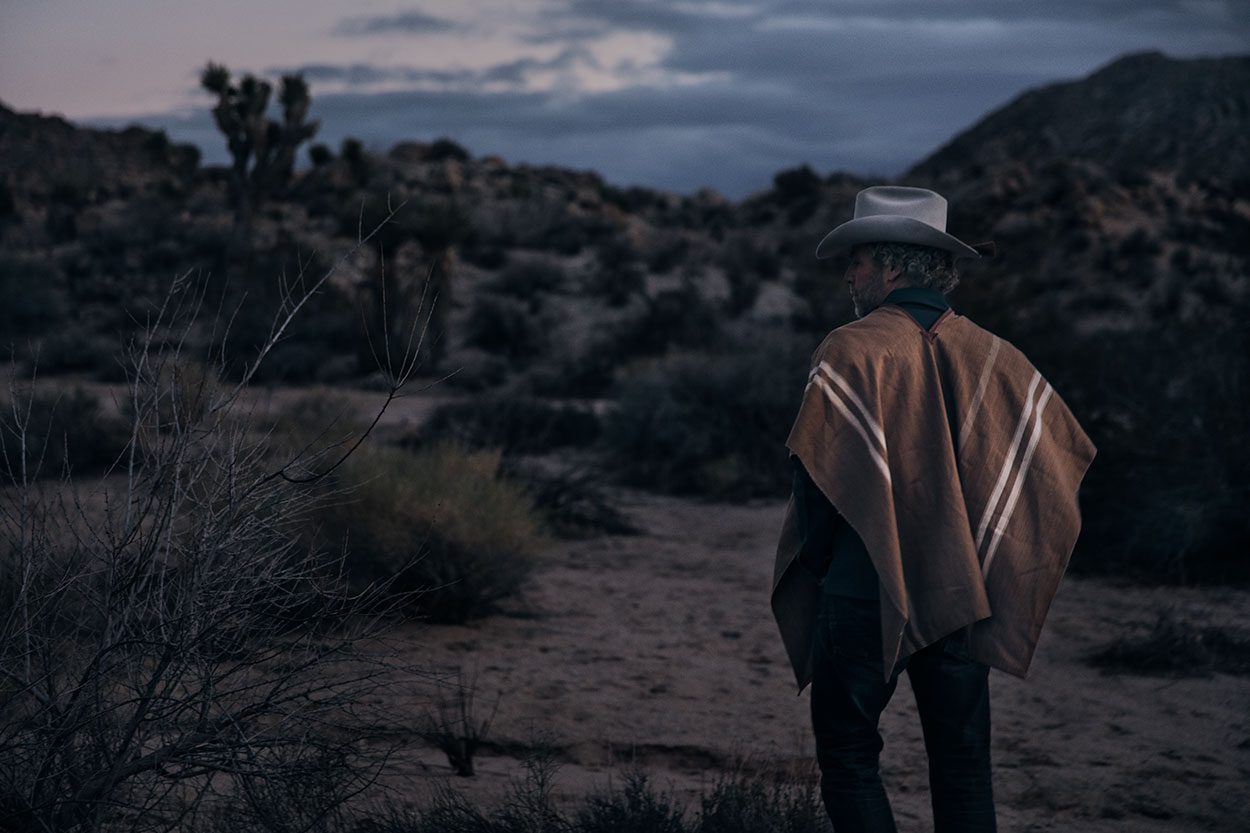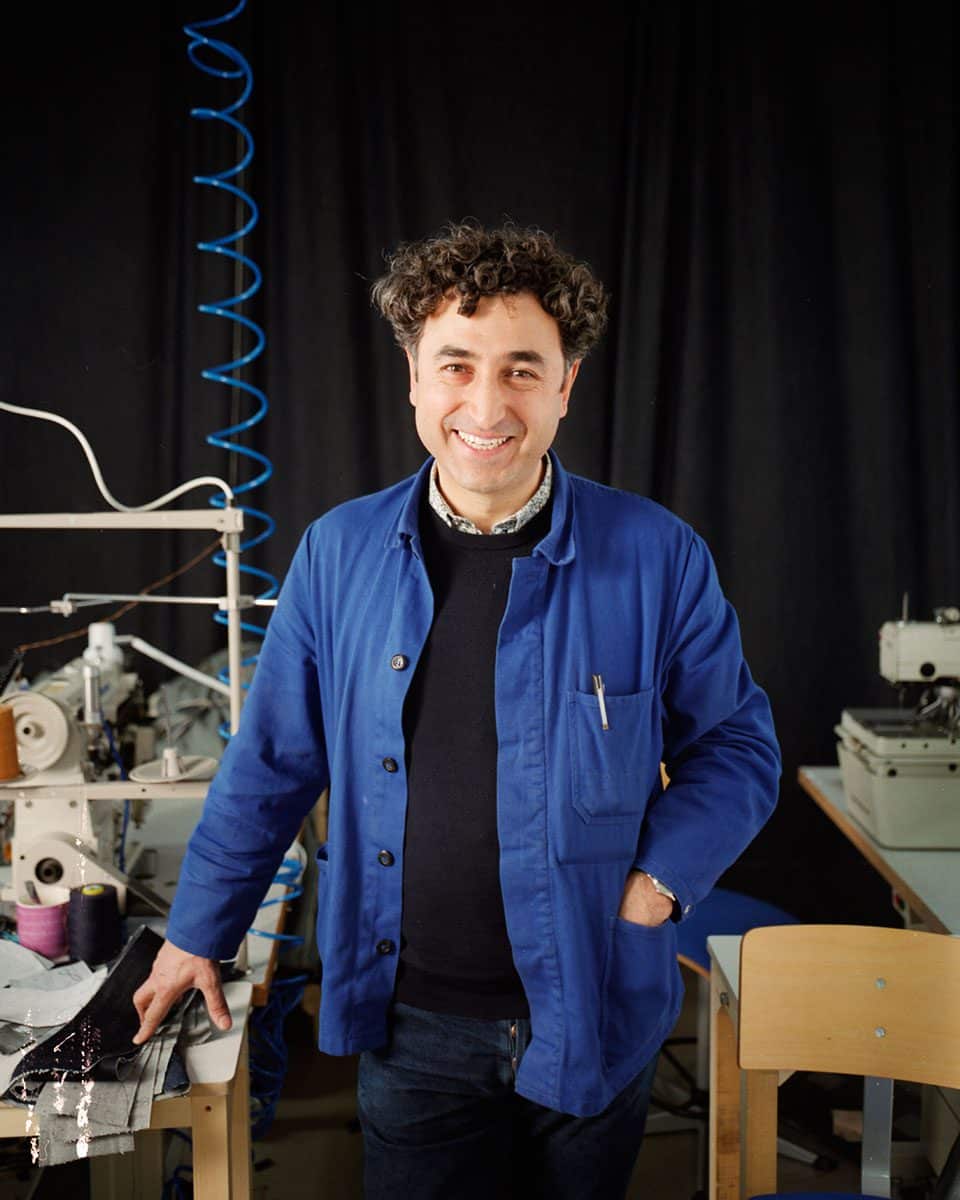The Importance of Brand Authenticity and Ethos For a Denim Brand (… Told By One That Practices What It Preaches)
When we talk about denim—and especially when it’s raw denim—we talk a lot about innovation within the industry with many brands putting new spins on the classic blue jean.
For many brands, it’s the way they distinguish their jeans from the fast-growing competition in the market. For the most part, jeans follow a similar format; the classic five-pocket setup and they’ve stayed this way because it’s classic.
If we want to talk about classic jeans, where better to start than with
Tellason—a company that’s built a brand around classic garments crafted with care and precision.
I caught up with founders Tony Patella and Pete Searson to talk about how their individual stories have made Tellason the brand it is today.
Authentic Stories Build Authentic Brands
The Tellason brand was founded by Tony Patella and Pete Searson at the close of 2008, in the heartland of the American blue jean, San Francisco. The story behind the brand, however, goes back a lot further. In reality, the story of Tellason is the story of Tony and Pete: two guys growing up in the 1970s’ San Francisco with a common appreciation for denim and a shared love for punk music.
Pete and I had both been in the industry for a long time prior to starting Tellason,” explains Tony.
He was a partner in a denim company back in the ‘90s, and it was here that he became well versed in everything that has to do with building a pair of jeans.
It was an eye-opener,” continues Tony.
Understandably so. His partner in the business was Cliff Abbey—a legend in the world of American denim and founder of the brand Sticky Fingers.
They were one of the first brands to make non-western style jeans for men” back when there wasn’t a huge selection of ‘designer jeans’ available.
Later, he got involved with Abbey’s other brand Sutter’s, which was insightful into how a big denim business operates, having built and sold almost 4 million pairs of jeans during his time there.
That wasn’t anything like we’re doing (at Tellason), but it was from (Abbey) that I learned how to do everything.”
Pete’s story is a little different, with a background in international sales and distribution.
I remember literally having to write on a piece of graph all the invoice numbers, dates and amounts,” he reminisces, “and I didn’t get paid until every invoice that was sent into my territory was listed on that piece of paper.”
Whilst it might not necessarily relate to denim, it certainly proves that Pete and Tony are no strangers to hard graft—an undeniably vital virtue when starting a brand from scratch.
Where the two come together is through their genuine passion for denim.
Tony and I are just old enough to reference our childhood and early adulthood to an era that preceded anything that’s happening now,” elaborates Pete, and understandably so.
This was a time before smartphones and the Internet and certainly before the huge variety of denim available to us now.
We bought blue jeans in August with our moms for going back to school. We’d get a new pair and they would ALWAYS by shrink-to-fit. That was it,” continues Pete.
It’s not hard to see how this upbringing reflects on Tellason’s own ‘strictly-dry’ denim offering.
It was only a matter of time before, given our combined passion for it, Pete and I said ‘let’s just do our own thing’,” states Tony.
Starting a denim brand would seem like the natural conclusion to that. Fortunately for them, the time and work they had dedicated before this paid off.
All of my contacts from back then were still around: from our current sewing factory, our pattern maker and especially our Cone Mills connections,” explains Tony.
Maintaining good and honest relationships with people helped them start up their own business and it’s clearly something they’ve never forgotten since those first days.
Use Your Own Story As Your Brand’s Foundation
Initially we were only going to develop one product. And we knew if you’re going to do it that way, we’d need to get it absolutely perfect otherwise Tellason would be over before it started,” admits Tony.
One could see such an undertaking as a risky business model, but Tony and Pete were clearly not easily daunted. “We spent 100 days making this first fit perfect.”
Naturally, having been designed by two old-school punks, they named it after one of punk’s greatest icons: John Graham Mellor. The three-month labour of love was a hit:
Everyone we showed it too was sold on the idea and by the time our initial run of 300 pairs was ready, it was already sold out,” states Tony on when they took their first product to market. “We almost felt that if someone didn’t want to buy it, they didn’t know what they were talking about,” elaborates Pete—no doubt their enthusiasm for their product quickly swayed any skeptical minds.
It’s no surprise that their first jean was made from dry denim. It wasn’t just for the sake of cutting out unnecessary costs associated with pre-fabricating ‘washes’; it was a statement.
The things trendy brands did to denim fabric in the ‘80s were incredibly wrong,” exclaims Pete “they kind of destroyed real denim culture.”
Pete and Tony sell their jeans dry as a salute to the culture they grew up with. And the spirit of punk is a seam that flows through all of Tellason’s denim. All of their fits draw reference to the history of The Clash.
When people think of punk music today, they think of violent music, which it really wasn’t back then,” Tony elaborates. “It was all DIY music and very inclusive and we were really influenced by that.”
The ‘be yourself’ spirit of that scene has clearly left a great impression on both Tony and Pete, and it’s a philosophy they’ve undeniably brought into how they do things at Tellason.
Even the little details like their ‘legal’ red tab are perceived as little protests to the ‘big denim’ industry that dominates the market today. That particular detail comes from Tony’s time at Sutter’s:
Levi’s have a legal team on staff who, at one point, sent us 10 cease and desist letters for supposed copyright infringement—little things like the back-pocket stitching or having a label coming off a pocket in similar fashion to a red tab.”
There’s not much a small company can do when facing up to an industry titan. But when it came time to do Tellason they, “decided that the only thing (they) could do about it, as a friendly poke in the eye, was to put in a red legal tab.”
Be Honest, Be Nice, and Treat People Fairly
Tellason as a brand is evidently founded on Pete and Tony’s philosophies. They’ve made it personal.
They stand for quality garments made by local suppliers, paid for at a fair price. Tony explains their approach to business as:
It’s not about saving a penny or 10¢ here or there, it’s about working with fewer suppliers who are all on the same page as us.”
There’s no better example for this than their relationship with Cone Mills, where they source all of their indigo denim.
We believe that they’re the single most important entity in American denim history that’s still in existence,” states Tony.
So if they’re not supported as a business, they wouldn’t be able to go on as a piece of American denim history either. “As a consumer, if you truly care about where your denim comes from, buy jeans with fabric made there,” argues Pete.
But it doesn’t just stop with the consumer:
If you’re a brand that talks about how it matters, put your money where your mouth is and buy fabric from there. If you don’t care then that’s fine too but we care a lot.”
Their close relationship with Cone Mills has resulted in three denim fabrics made exclusively for Tellason: a 12 oz. denim with a high sulfur and indigo content, which means it doesn’t crock that much; a 14.75 oz. fabric that’s highly saturated with indigo; and a 16 oz. denim that has a higher wax and starch content so that it’s really rigid.
As per usual, championing local businesses is important for Pete and Tony too. It’s personal for them but the way they see it, there are other reasons for it too.
Being from San Francisco—the home of blue jeans—there’s not a lot left in the city in terms of denim production, but they work with the last factory that actually makes denim jeans.
Tony is very clear about why:
We’re very passionate about supporting them: 95% of everything that carries the Tellason brand was made in that one place. We do that because we want these places to survive.”
The two founders tell about their latest meeting with Cone Mills at the White Oak plant, for their 125th anniversary, where they caught up with the very people who make their fabrics:
Once you have that connection, as we do with them and our other suppliers,” questions Tony, “how could you then walk away from that in the name of saving a few dollars?”
Their frustration with brands who preach the same things that they do but don’t follow up on it is palpable. They maintain, however, that ultimately it’s good for business.
The example they use is that—as a result of their close relationship with Cone Mills—a pair of Tellason jeans bought ten years from now will be made from the same fabric as a pair bought today.
Advice on Starting A Brand, From Two People Who Succeeded
There are many different routes one can take to starting a denim brand, depending on what motivates you and your own personal story. Regardless of this, there is always one factor that makes the difference between success and failure: is your product worth buying?
For Tony and Pete at Tellason, this is self-evident. They clearly believe in their products, which they’ve built on strongly-held principles: they care about where their fabric comes from and how it’s been made. They also care that their fellow artisans have been paid a fair price for quality work and they are happy to admit it.
Tony couldn’t put it any more plainly:
If you’re a brand that cares about the little details then stand up for what you believe. If you don’t care then that’s fine too but we care a lot.”
The best advice that they could give anyone thinking about starting their own brand is this:
Have focus, have patience and don’t try to be all things to all people,” states Tony.
Pete’s final piece of wisdom is to:
Drive a shitty old car even when you are making money—it keeps you humble!”
At the end of the day, be a brand that your customers can believe in. Be authentic.
Get More Denim Stories – Sign Up NOW!
If you liked this article, and if you want more like it, sign up for the FREE Denimhunters newsletter below.
Disclaimer: Links to Tellason on this page are affiliate links. This means we earn a small commission on sales generated through these links. Tellason did NOT pay for this content.
Share







Great post about an awesome authentic brand which I love a lot!!!!